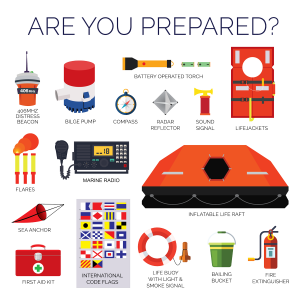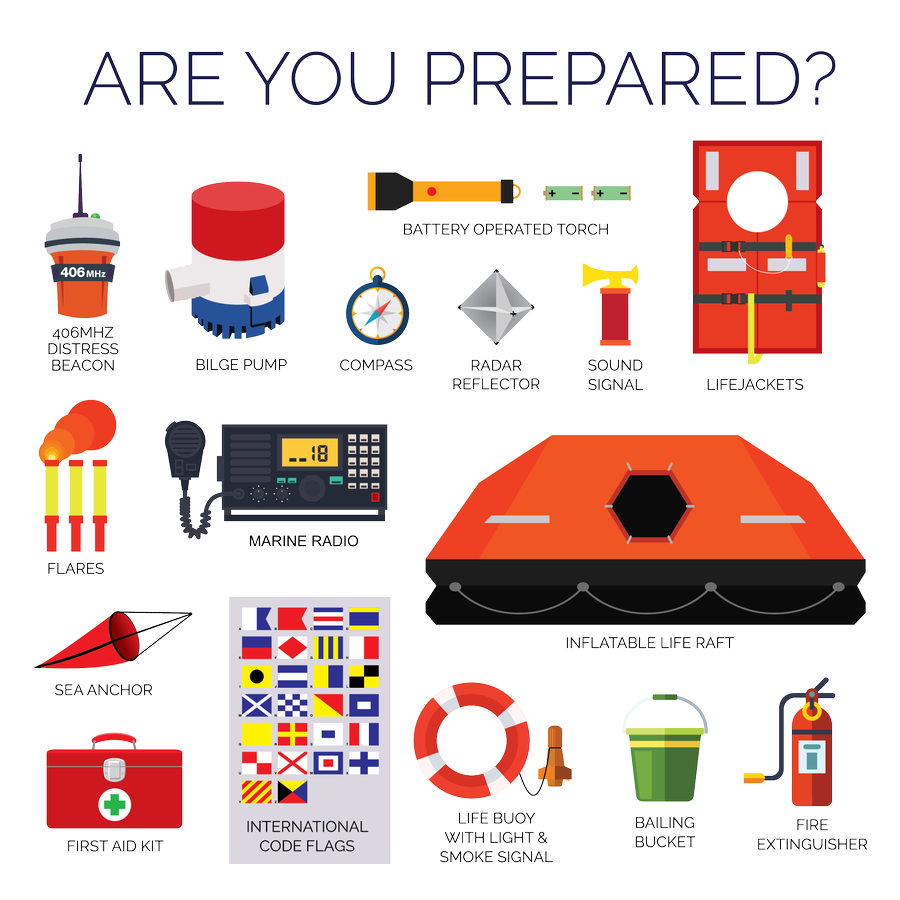
Reference: AMSA
Having the right safety equipment onboard your vessel could mean the difference between life and death in an emergency. Safety equipment will vary depending on the type of vessel and operation, from a small solo-operated tender in near coastal waters right through to a 300m bulk carrier on an international voyage. Below you’ll find some general information about specific types of safety equipment and in particular, how to store, care-for and use these devices. Always refer to the relevant legislative requirements and manufacturer guidelines for safety equipment for your vessel and operation.
Lifejacket
Why wear a lifejacket?
Lifejackets save lives. It’s that simple.
Splash. One minute you were in the boat, the next you’re overboard. Maybe it was a rogue wave that capsized your boat, maybe it was a misstep. It doesn’t matter. If you’re not wearing a lifejacket, it’s already too late. When accidents happen, there’s rarely time to put a lifejacket on. Add into the mix swell, shock, fatigue and treading water until rescue arrives—and the benefits of wearing a lifejacket become clear. With the range of lifejackets on the market you can be comfortable and safe on the water. We encourage you to think about the lifejacket you need for your operations, then find a style that suits you.
What lifejacket do I need?
It’s important to identify what lifejacket you should use. This will depend on your operational requirements, and also on the type that is the best fit for you and your crew. Domestic commercial vessel owners and operators must assess the risk of personnel going overboard on their vessel and address this in their safety management system. This is a legal requirement under the general safety duties. A Flag state requires you to have either Safety of Life at Sea (SOLAS) or coastal lifejackets on your vessel, depending on your operational area. This is covered in more detail in the table below.
SOLAS and coastal lifejackets are designed to be worn while abandoning a vessel. Some can be bulky, with flotation material at the front so an unconscious person will automatically roll onto their back. They also have reflective tape and a whistle to attract attention.
SOLAS and coastal lifejackets are made to different standards. SOLAS lifejackets designed to help people stay afloat in water for long periods of time, while awaiting rescue.
Certain models of inflatable lifejackets also meet the NSCV requirements for coastal lifejackets—if they are manufactured to the correct standard. Because inflatable life jackets are less cumbersome to wear than traditional coastal and SOLAS lifejackets, they may be more comfortable to wear during normal activities on a vessel to reduce the risk of drowning if you fall overboard.
Lifejacket maintenance and storage
So that your lifejacket works when you need it, it’s important to maintain it according to the manufacturer’s instructions.
Follow the manufacturer’s instructions.To ensure lifejackets are in working order, you should follow the manufacturer’s instructions about maintenance. This is particularly important for inflatable lifejackets. Use these instructions and any other government or industry requirements to develop a maintenance schedule for your lifejackets and all your other safety equipment.
Never take short-cuts on servicing or skip your lifejacket maintenance checks. Keep proper records of what maintenance has been done. This allows you to track when they are next due for servicing or self-checks and helps to ensure your safety.
Lifejacket storage:
Follow these tips for the storage of your lifejacket:
ensure your life jacket is dry before storing it
clean off any salt before storage
store it in a dry place, out of sunlight and away from heat
visually check your lifejacket after use and before storing again
make sure that the place you store your lifejacket can be easily accessed at all times. If you have assessed that it’s not necessary to wear a lifejacket in a given situation, ensure your lifejacket can easily be reached in an emergency.
Prepared by Dr.Reza Karimpour

